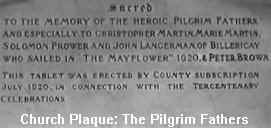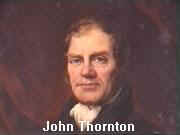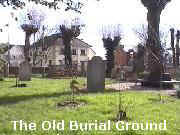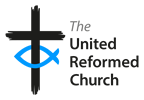History
The founders of what is now Billericay United Reformed Church lived in the 17th century. From quite early in that century there were a number of people in the town who dissented from some of the ceremonials and practices of the Established Church. Indeed, five local inhabitants sailed off to America in 1620 in the “Mayflower” – with what we now call the Pilgrim Fathers – in order to achieve freedom to worship in the way they chose.
However the official foundation of the “dissenting” church in Billericay was in 1672, when a licence was obtained for a “meeting house” in the High Street. The same building still stands and bears a plaque, put up when the church celebrated its tercentenary in 1972. The first preacher in 1672, who also had to be licensed, was the Rev Nathaniel Ranew, who along with many others had been forced out of the Established Church ten years previously.

By the end of the 17th century the dissenting congregation was holding worship in a barn in the street now called Chapel Street, and the land on which the barn stood is still owned by the church. Numbers of worshippers grew, and reached about 400 by 1716, in what was quite a small town. It was decided that a brick-built Meeting House was needed. For this to be built, a lease on the site was obtained in 1725, and in mid-century the freehold was bought.
For more than 40 years, till 1785, the minister of the Meeting House was Rev Philip Davies, who had trained at a Dissenting Academy (Dissenters were at that time barred from the Universities). He lived in a substantial house which survives to this day, now called “Gatwick”, standing in large grounds.

Another long-serving minister was Rev John Thornton, who came as a young man in 1800 and died in office in 1841. Apart from his work in Billericay, he was active in preaching in nearby towns such as Wickford, Stock and Ingatestone, each of which established its own church building in due course. Also during his ministry, a Sunday School was started in the Billericay Meeting House, where about 100 “poor ignorant children” began to receive some education.
Rev John Thornton married into a well known local dissenting family, the Mabbs, and the box tomb where he and other members of the family are buried may still be seen on the site of the first meeting House, in what we now call the Old Burial Ground.
Before the end of his ministry it had been decided to build a new and larger church building, the building in which the present U.R.C. still worships, 150 metres further south in Chapel Street. This cost £1,455.
A number of shorter ministries followed around the middle of the 19th century, during which time the church joined the Congregational Union, consisting of other independent but like-minded churches across the country.
In 1876 another significant ministry began under Rev Alfred Kluht, who served the church for 19 years. The organ we use even now was installed in 1879, and there was outreach in the form of mission meetings at South Green and Gooseberry Green on the fringes of the town.
1920 saw the tercentenary of the sailing of the “Mayflower” and a plaque was put up in the church commemorating the Billericay members of the Pilgrim Fathers. Soon afterwards, a church hall was built, also in Chapel Street and was named the Mayflower Hall. This is used by the U.R.C. and by a number of outside organisations.
Eleven ministers served what was the Billericay Congregational Church during the 20th century, the longest ministry being that of Rev Jim Wilkinson. In 1972, under his leadership, we joined the newly formed United Reformed Church, a union of Congregationalists and English Presbyterians.


The year 2000 was marked in two ways, At midnight at the start of the year we joined with all the other churches of the town in an open-air service. A few months later our Old Burial Ground was opened to the public as a Garden of Peace, and a plaque was installed recording the long association of that site with our Church.
Simon Mynott, February 2001
